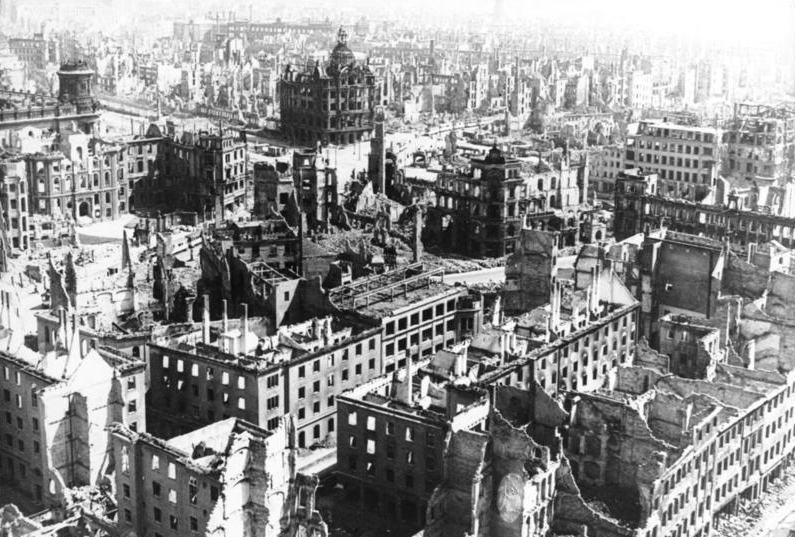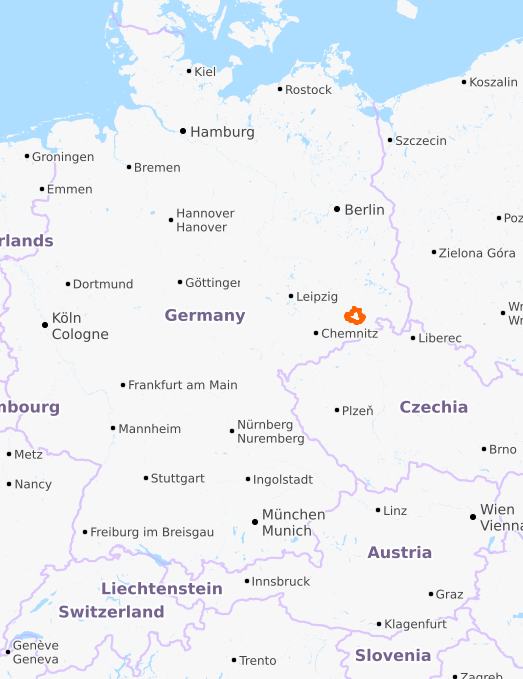settings
Rebecca vocabulary
21 places mentioned
help & settings
[x]
-
Dresden
-
► definition
Definition:the capital city of the German state of Saxony, and with around 550,000 inhabitants, it is the state's second most populous city after Leipzig. It is the 12th most populous city of Germany, the fourth largest by area after Berlin, Hamburg and Cologne, as well as the third most populous city in the area of former East Germany, after (East) Berlin and Leipzig. Dresden is contiguous with Freital, Pirna, Radebeul, Meissen and Coswig, and its urban area has around 780,000 inhabitants, making it the largest in Saxony.[...]During the Nazi era from 1933 to 1945, the Jewish community of Dresden was reduced from over 6,000 (7,100 people were persecuted as Jews) to 41, as a result of emigration and murders. Non-Jews were also targeted, and over 1,300 people were executed by the Nazis at the Münchner Platz, a courthouse in Dresden, including labour leaders, undesirables, resistance fighters and anyone caught listening to foreign radio broadcasts. The bombing stopped prisoners who were busy digging a large hole into which an additional 4,000 prisoners were to be disposed of.[...]During the final months of the Second World War, Dresden harboured some 600,000 refugees, with a total population of 1.2 million. Dresden was attacked seven times between 1944 and 1945, and was occupied by the Red Army after the German capitulation.The bombing of Dresden by the Royal Air Force (RAF) and the United States Army Air Forces (USAAF) between 13 and 15 February 1945 remains controversial. On the night of 13–14 February 1945, 773 RAF Lancaster bombers dropped 1,181.6 tons of incendiary bombs and 1,477.7 tons of high explosive bombs on the city. The inner city of Dresden was largely destroyed. The high explosive bombs damaged buildings and exposed their wooden structures, while the incendiaries ignited them, denying their use by retreating German troops and refugees. Widely quoted Nazi propaganda reports claimed 200,000 deaths, but the German Dresden Historians' Commission, made up of 13 prominent German historians, in an official 2010 report published after five years of research concluded that casualties numbered between 18,000 and 25,000.text from Wikipedia, licensed under Creative Commons - Attribution - Sharealike photo: By Bundesarchiv, Bild 183-Z0309-310 / G. Beyer / CC-BY-SA 3.0, CC BY-SA 3.0 de, https://commons.wikimedia.org/w/index.php?curid=5371503
photo: By Bundesarchiv, Bild 183-Z0309-310 / G. Beyer / CC-BY-SA 3.0, CC BY-SA 3.0 de, https://commons.wikimedia.org/w/index.php?curid=5371503 map: by OpenStreetMap®, licensed under the Creative Commons Attribution-ShareAlike 2.0 license
map: by OpenStreetMap®, licensed under the Creative Commons Attribution-ShareAlike 2.0 license
► uses
Uses:
All this happened, more or less. The war parts, anyway, are pretty much true. One guy I knew really was shot in Dresden for taking a teapot that wasn’t his. Another guy I knew really did threaten to have his personal enemies killed by hired gunmen after the war. And so on. I’ve changed all the names.
I really did go back to Dresden with Guggenheim money (God love it) in 1967. It looked a lot like Dayton, Ohio, more open spaces than Dayton has. There must be tons of human bone meal in the ground.
Kurt Vonnegut. Slaughterhouse-Five (1968)
---
Rake that town from one end to the other. I want it to be like Hamburg and Dresden in World War II.
Stephen King. The Stand (1990)

